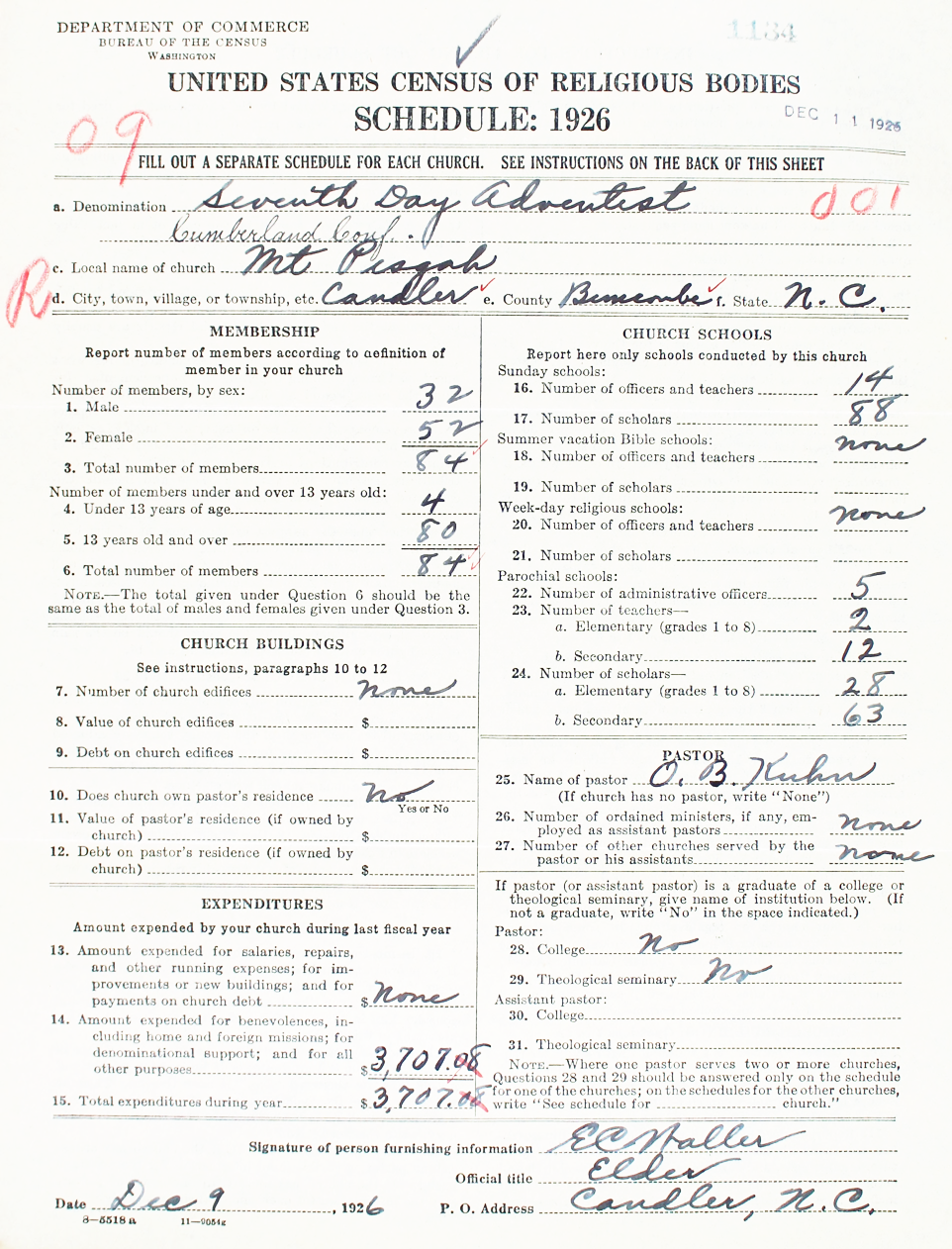American Religious Ecologies at AHA 2023
Our project's poster displayed at the American Historical Association gives an overview of the project.
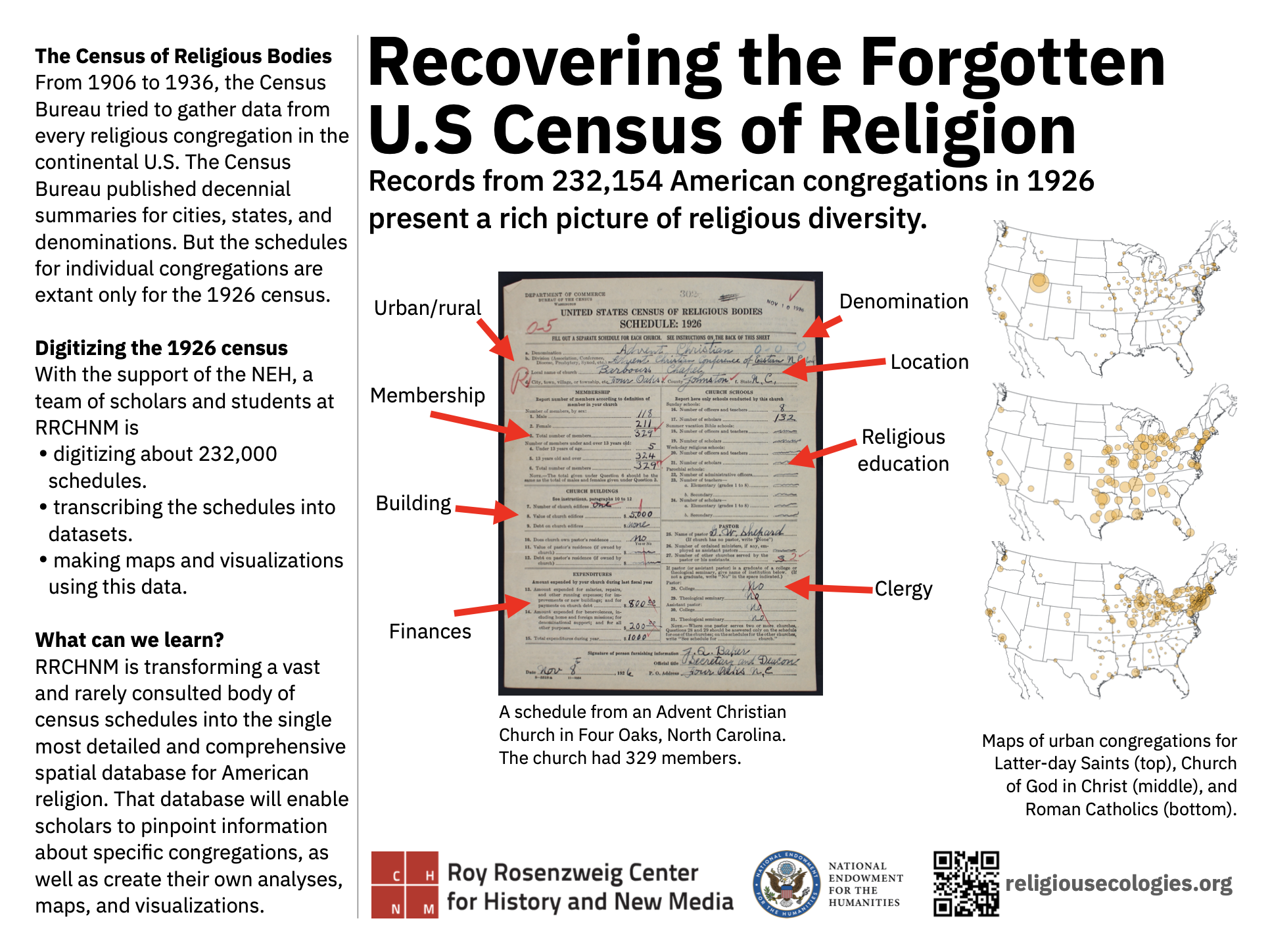
How we digitize the 1926 census
A comprehensive case study documents our process for digitizing and transcribing the 1926 Census of Religious Bodies.
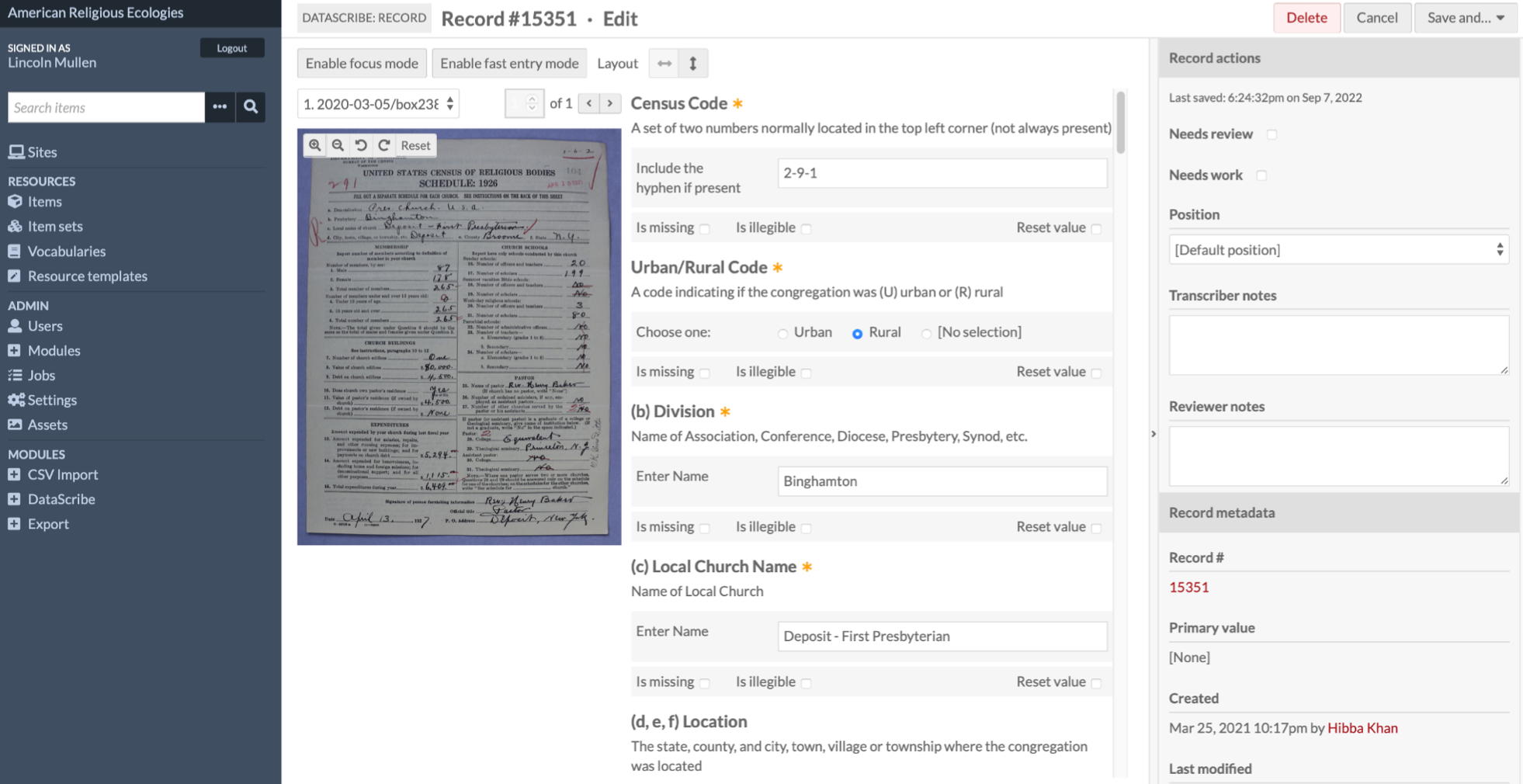
How middle was Middletown?
The city-level data from the Census of Religious Bodies lets us understand how ecologies of religion varied from city to city..
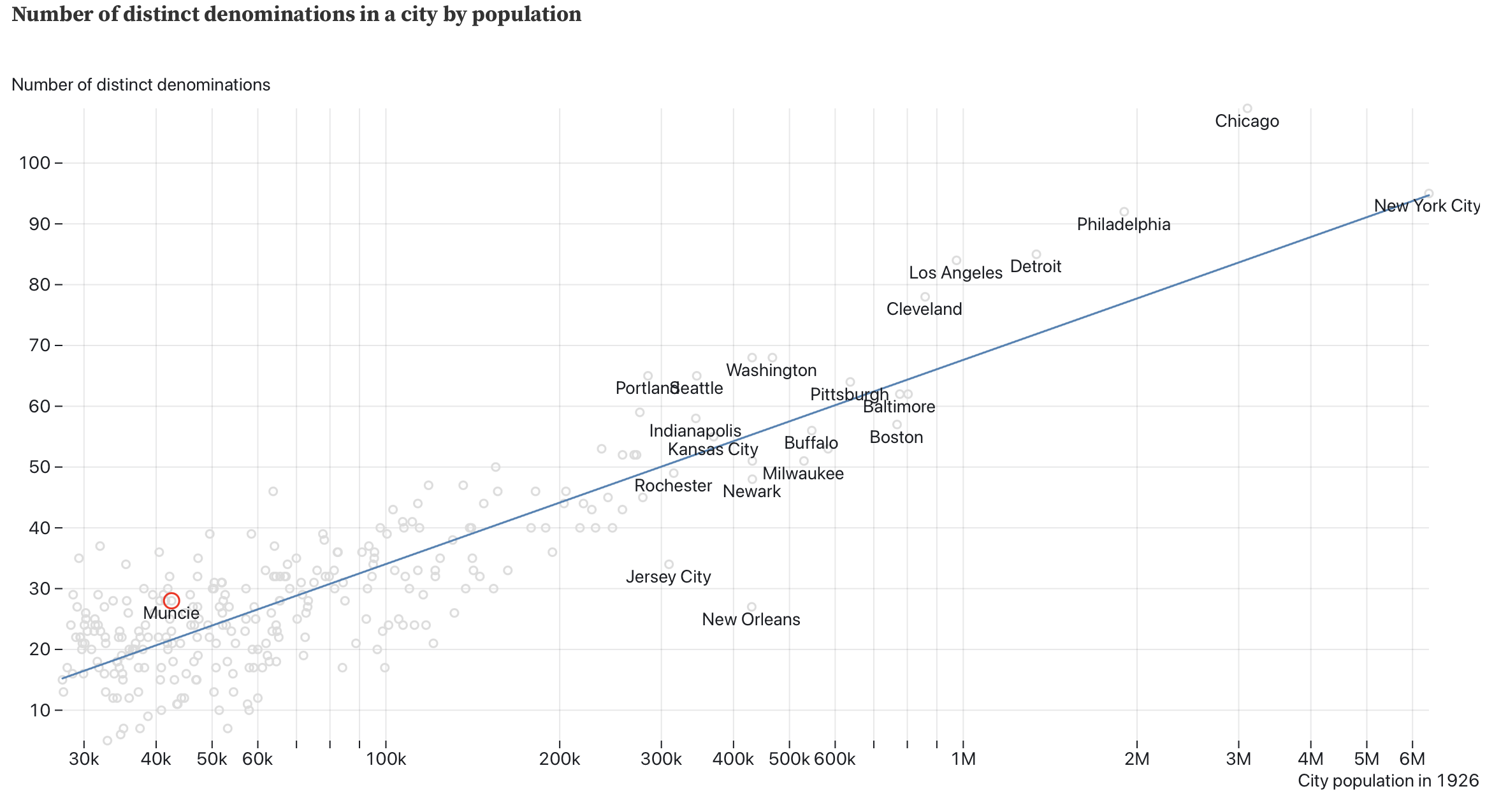
Schedule Spotlight: the Dorcas Spiritual Alliance Church
This month's spotlight schedule focuses on a small, female-led Spiritualist church in Philadelphia mentioned in our recent visualization.
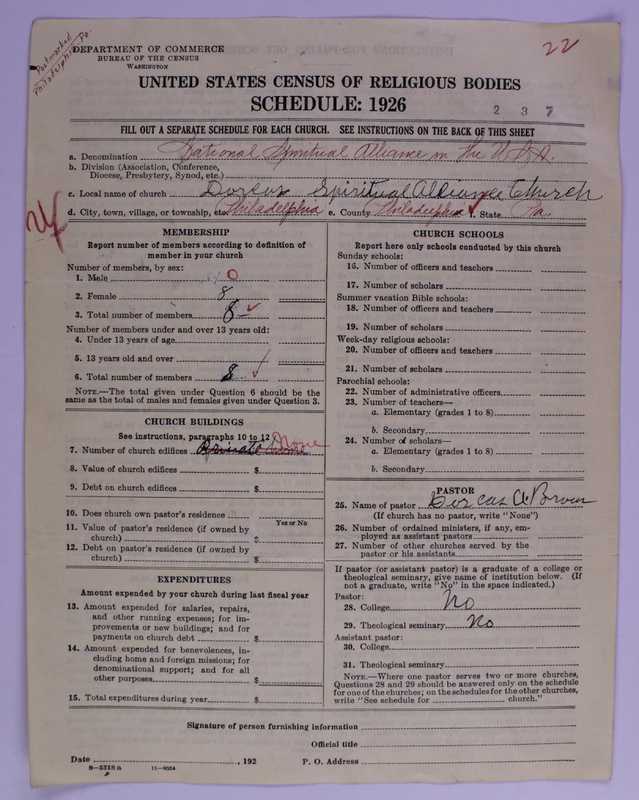
The Latter-day Saints and the 1926 U.S. Census of Religious Bodies
The Latter-day Saints participated actively in the Census of Religious Bodies, but their schedules were filled out centrally by the office of the Presiding Bishop.
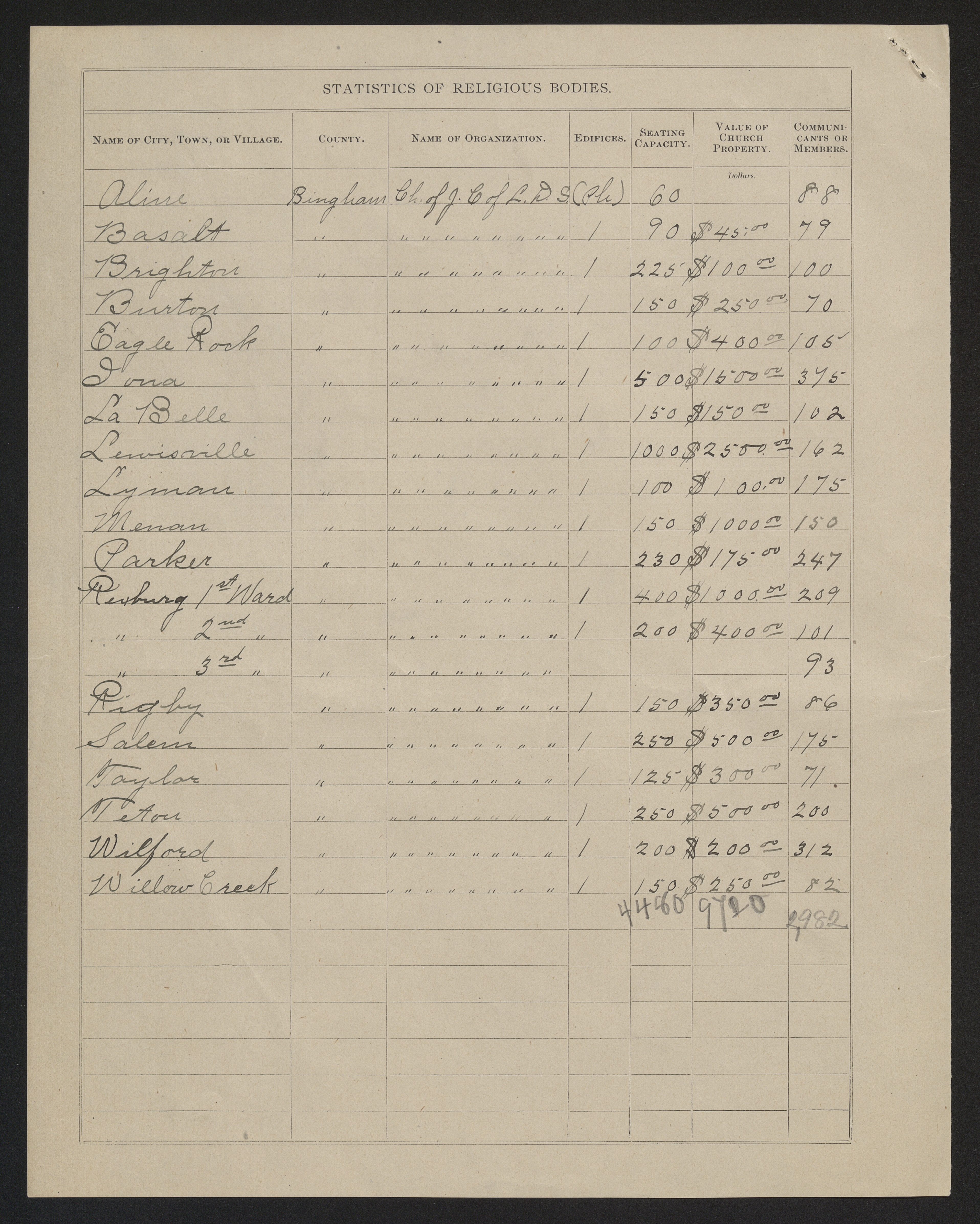
Schedule Spotlight: the Amana Society
This month's spotlight schedule is about the Amana Society, a communal living society with seven villages across Iowa. Here we look into the group's history and development and their communities as they were in 1926, while also examining how the Census Bureau collected data about non-traditional denominations.

Schedule Spotlight: Watervliet Shakers
The Watervliet Shakers in Colonie, New York were the site of the first permanent Shaker settlement in the United States. This post explores the community in 1926.

The Absence of Muslim Americans in the Religious Bodies Census
The Census Bureau did not count any mosques or any Muslim communities in the 1926 Census of Religious Bodies. Here, we explore why the absence of Muslim Americans is significant.
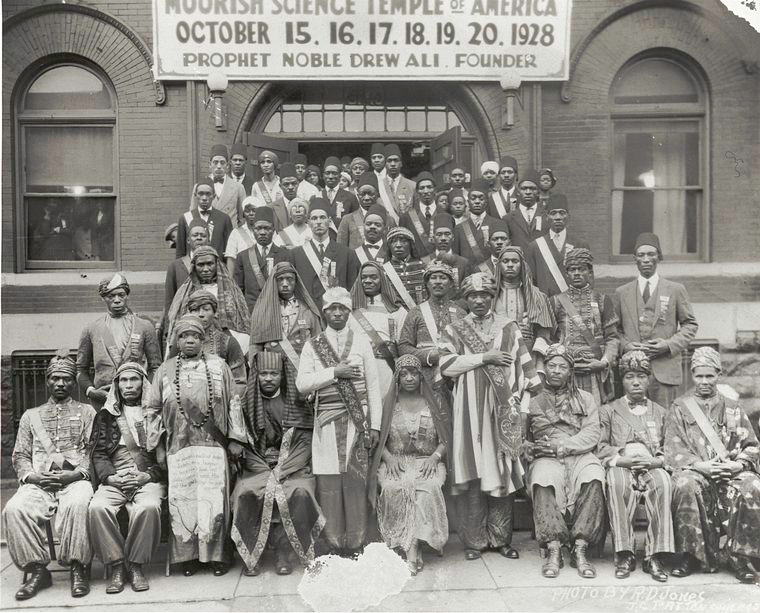
Schedule Spotlight: Advent Christian Church in St. Johnsbury, Vermont
For Women's History Month, we are spotlighting a congregation that not only had a female pastor but had highly active women church members in their church services and official leadership.
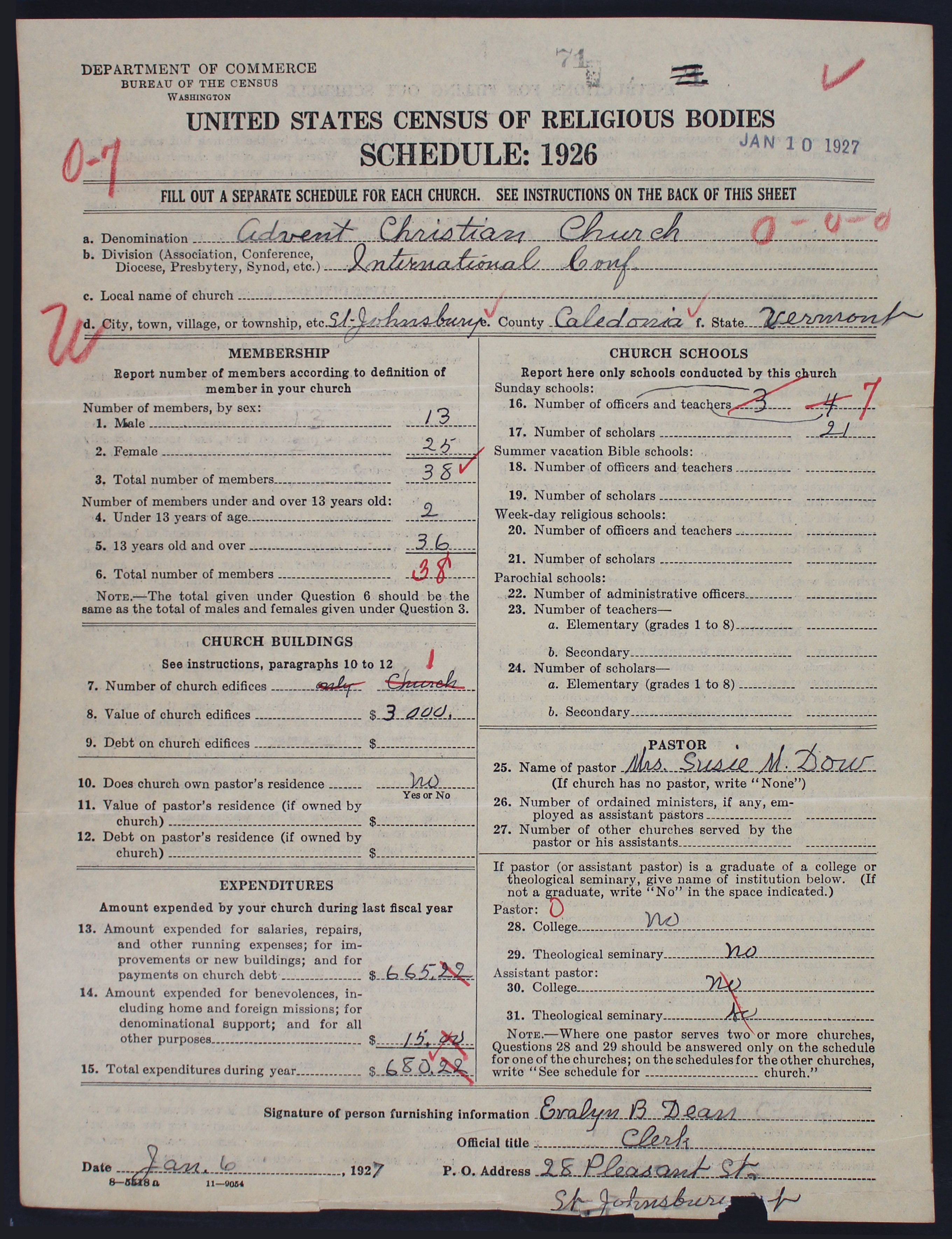
How the Religious Bodies Census Changed Its Questions Over Time
Through the four different Religious Bodies censuses conducted through the decades of the early twentieth century, the Census Bureau changed the way it asked certain questions and how it approached gathering information. This blog posts discusses changes made to the questions it asked about ministers.
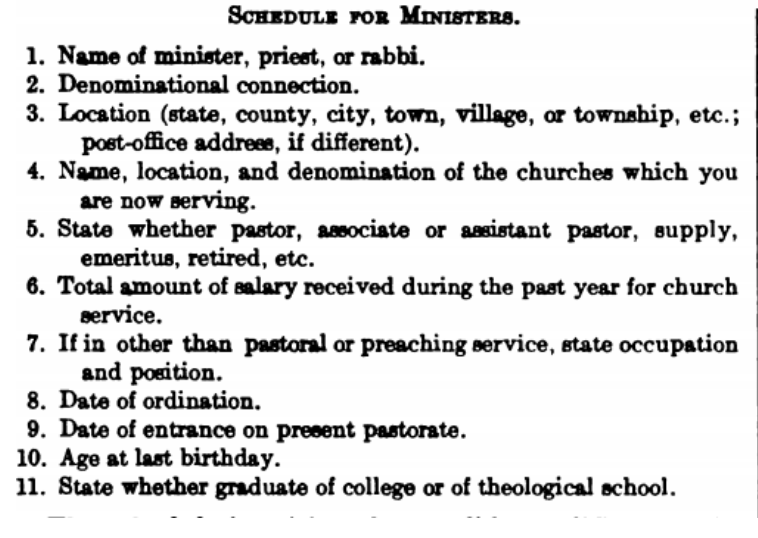
City-Level Data in the Census of Religious Bodies
The U.S. Census Bureau published aggregated data for U.S. cities. This data can be used to understand how cities varied in the number of religious options they had available, and in the proportion of the city's population that was counted as being the member of a religious body.
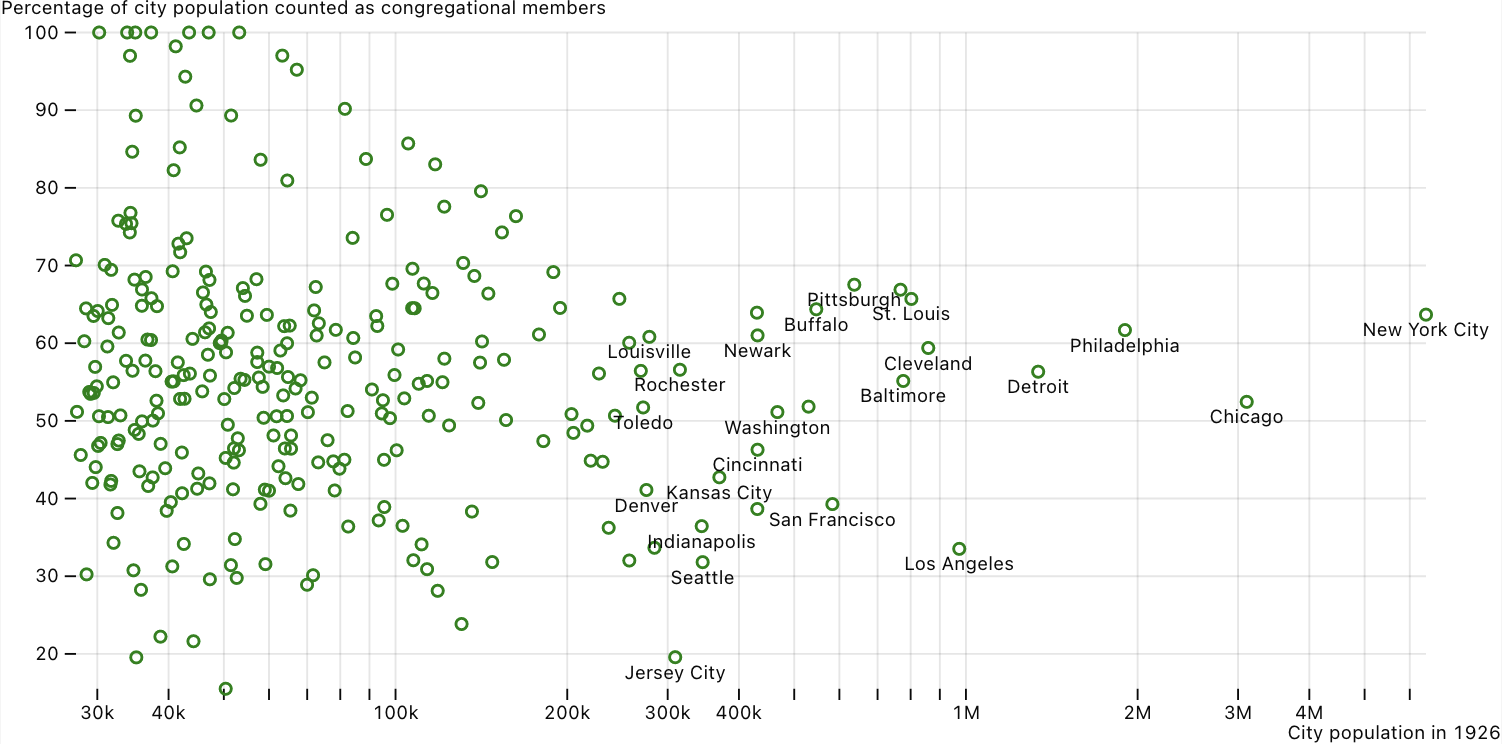
Schedule Spotlight: Plymouth Brethren I: 122
This Plymouth Brethen schedule included a handwritten note located on the back of the document. This note included the name of a woman who owned the house where the congregation met. With some online digging, we learn more about this woman here.
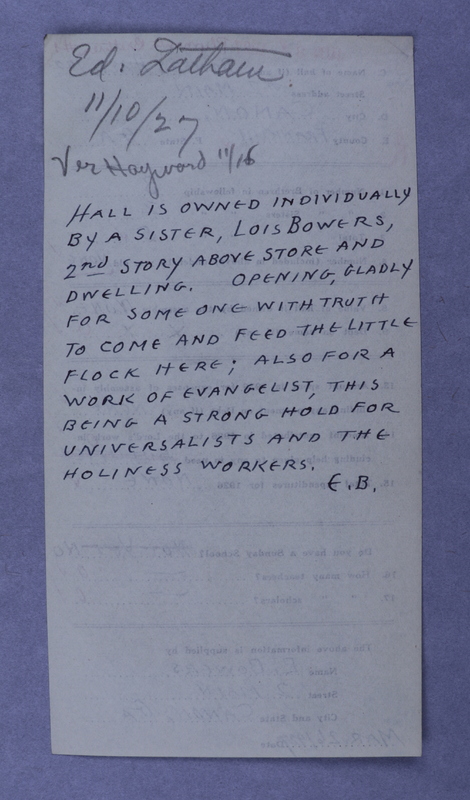
American Rescue Workers
The 41 American Rescue Workers schedules included in the 1926 U.S. Census of Religious Bodies all include an extra page detailing the organizations charity work at specific missions. By analyzing the locations and specific type of charity work done we explore how the missions met their constituents' needs. We also note how their work was so important that the organizations included information not asked for on the schedule.
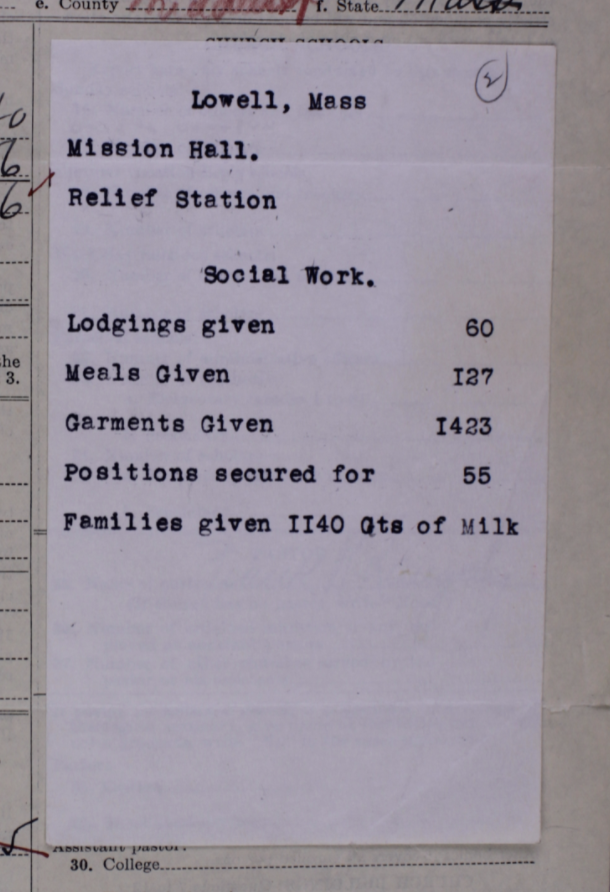
Schedule Spotlight: Reverend Ida Bedell Manville
The schedule for Willow Grove Adventist Church in Mt. Liberty, Ohio listed the pastor as “Mrs. Ida Manville.” Using census records and other online sources, we've found out more about her life and family.
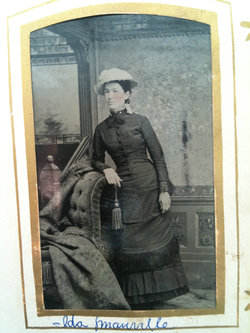
“Negro Baptists” in the U.S. Census of Religious Bodies
The 1926 U.S. Census of Religious Bodies added “Negro Baptist” to the denomination list it used, despite it not being a name used by any African American Baptist congregation. Here we explore why this categorization was used.
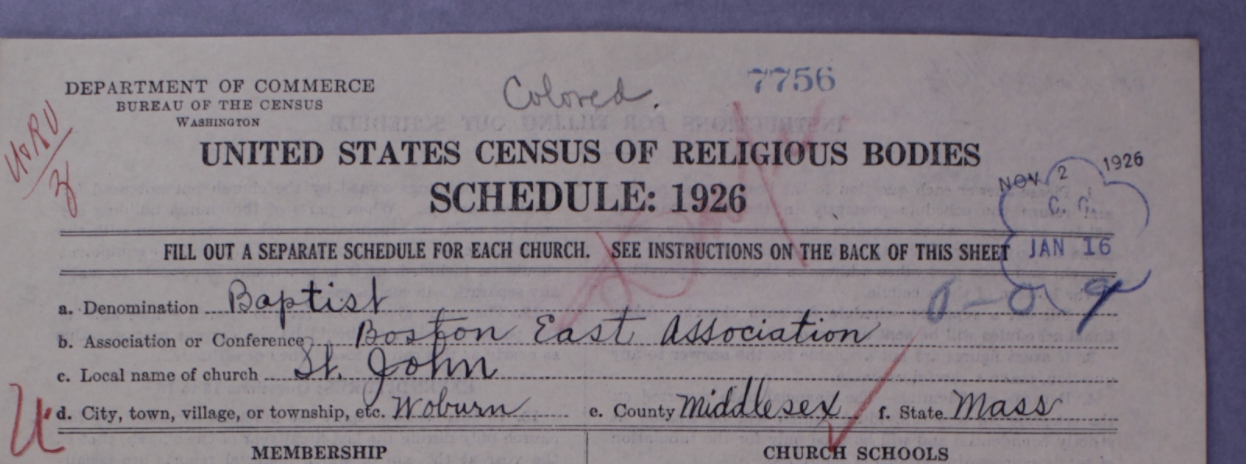
Deploying DataScribe to Create a New Dataset for American Religious History
American Religious Ecologies is using a new transcription module called DataScribe to create datasets from the Census of Religious Bodies.
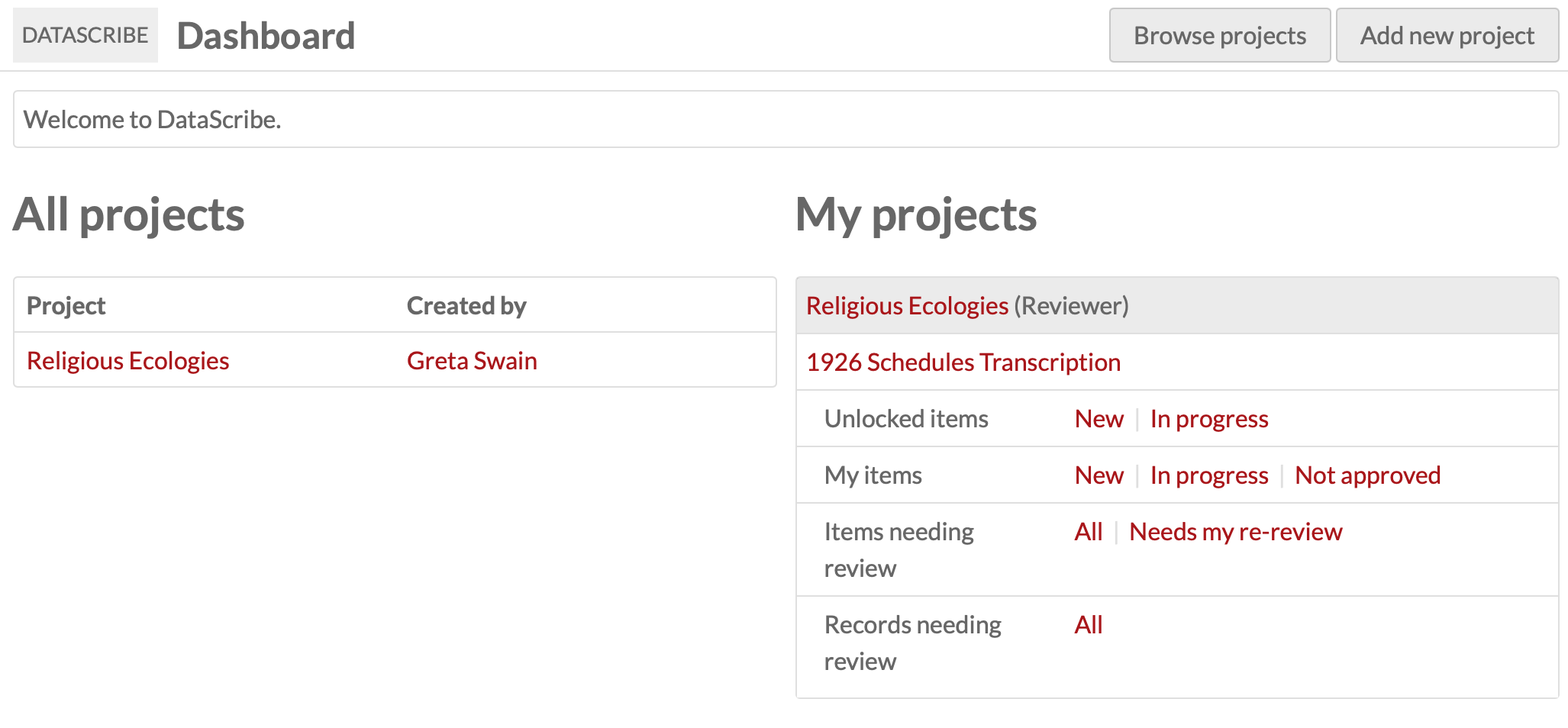
Female Pastors in the 1926 Census Schedules
A number of female pastors appear in the 1926 U.S. Census of Religious Bodies. This post seeks to explore these women and the questions we can ask and answer about women in the census.
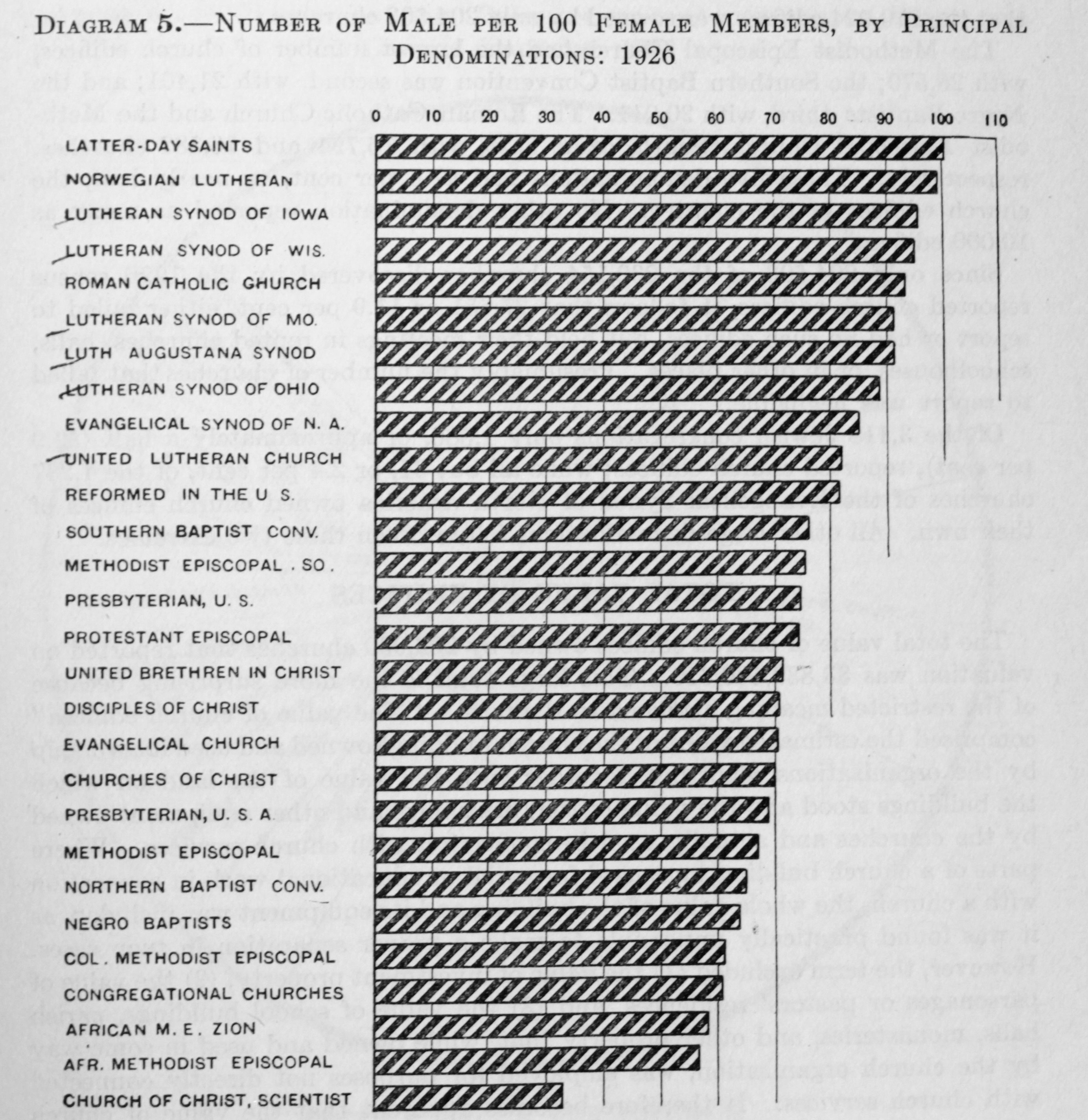
40,000+ Documents from Religious Bodies Census Digitized Nearly a Century Later
Today we are releasing the initial version of a website that makes available tens of thousands of documents from the 1926 U.S. Census of Religious Bodies. These documents are freely available to scholars, students, and local historians, who can browse or search for them by location or by religious identification.
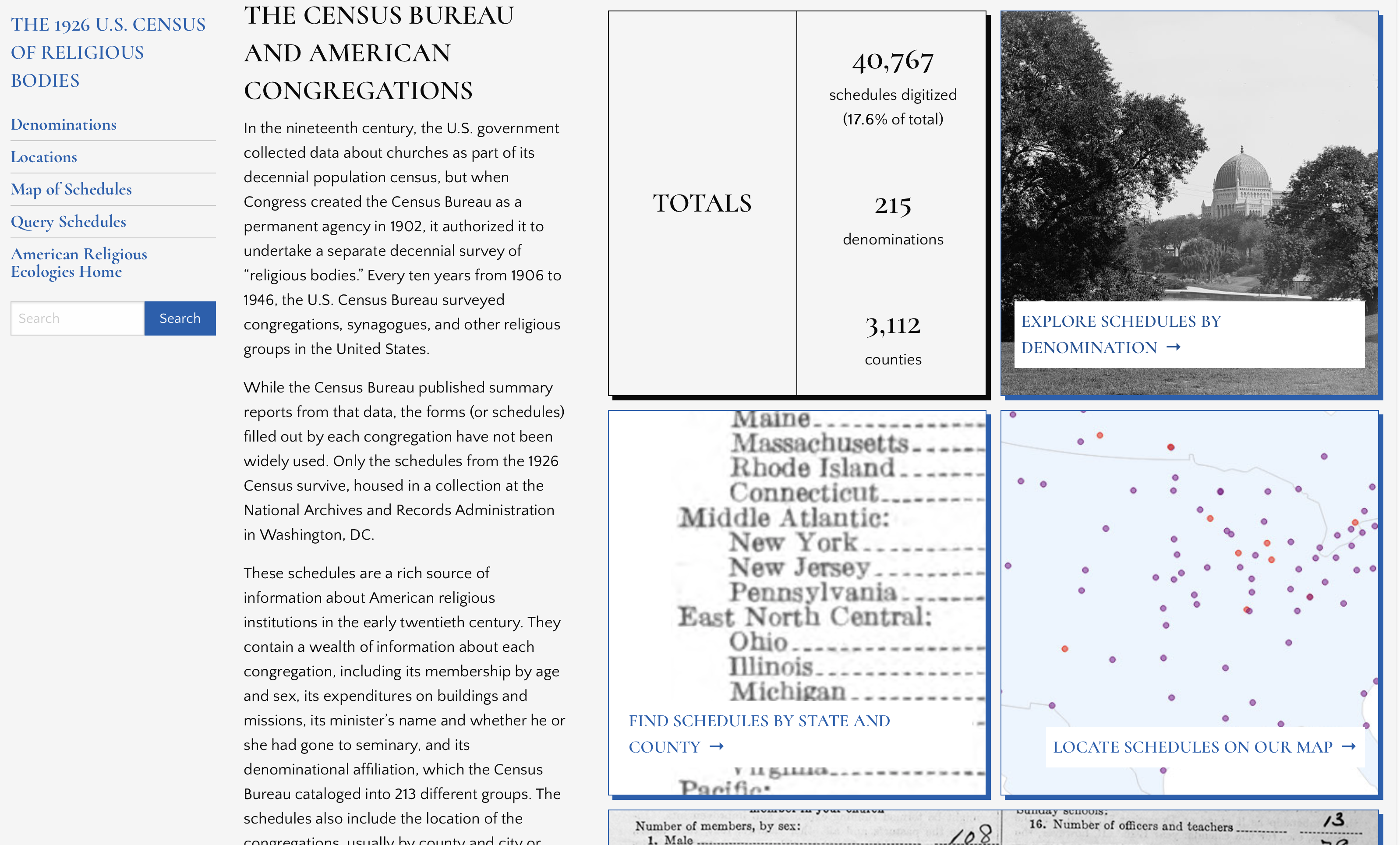
Video: From infrastructure to interpretation in the digital history of American religion
One of the historians on the project offers a behind-the-scenes look at how our team is digitizing, transcribing, visualizing, and interpreting the 1926 Census of Religious Bodies.

How the the Religious Bodies Census was first digitized ... in the 1920s
Once the Census Bureau had gathered the hundreds of thousands of schedules from religious groups, it had to count them up. Markings on the census schedules let us reverse-engineer how the Census Bureau went about literally counting religion.
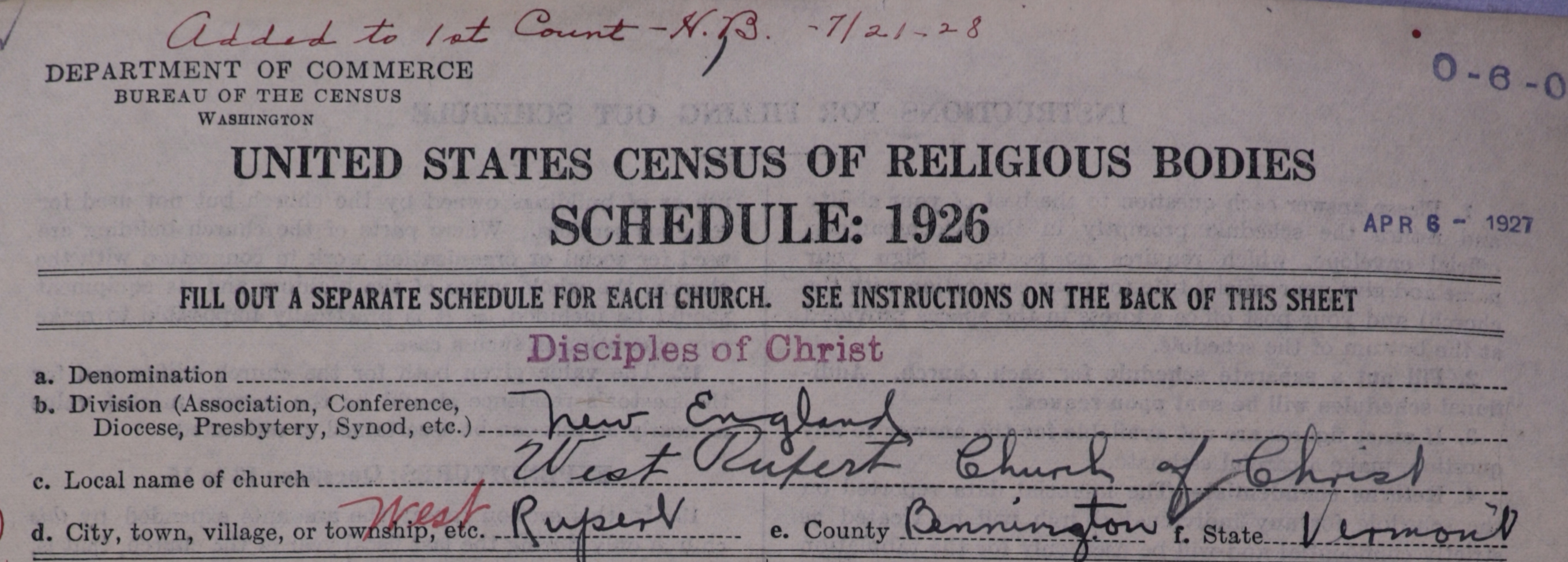
What can you learn from a census schedule?
The Census Bureau spent a great deal of effort in designing the schedules, or forms, that it sent out to hundreds of thousands of congregations for the 1926 Census of Religious Bodies. Those forms were the primary expression of what the Bureau thought religion was: what about it was worth counting, and which groups counted as a religion. What can we learn from these schedules?
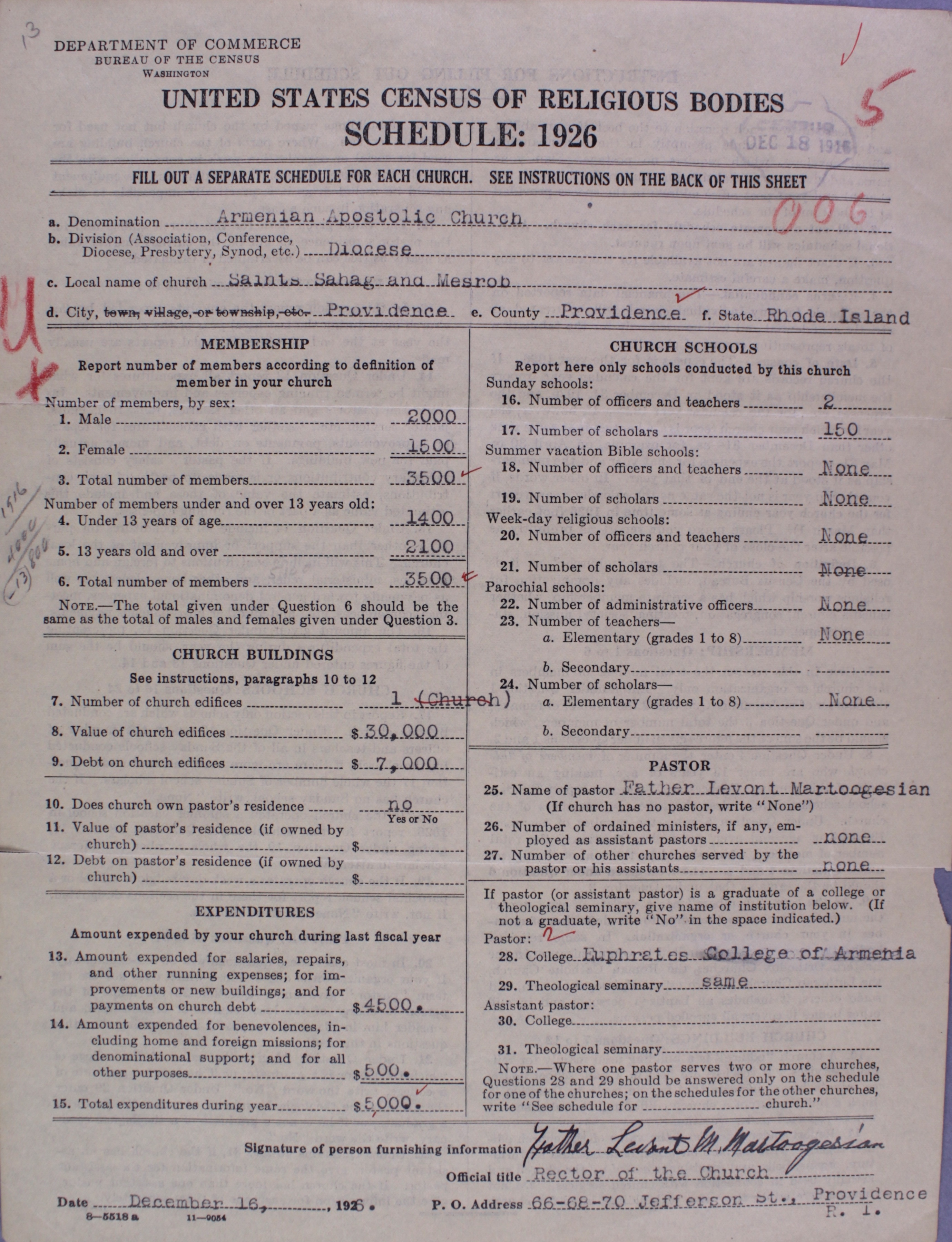
American Jews and the U.S. Census of Religious Bodies
The U.S. Census Bureau struggled to decide how to count Jewish Americans, experimenting with several methods of enumerating synagogue membership. Beginning in 1926, the Bureau outsourced the task to the American Jewish Committee, which reported estimates of the entire Jewish population of places rather than the membership of synagoguges and other Jewish organizations.
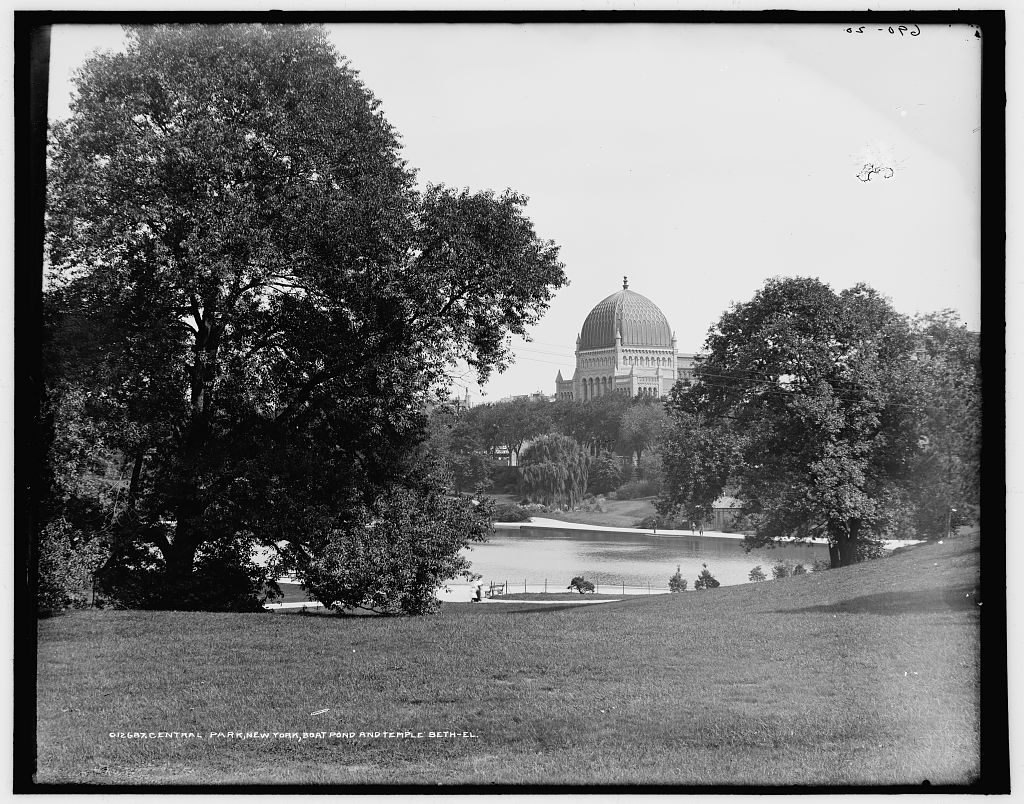
Digitization of 230K+ Schedules Has Commenced
Work is now underway to inventory, digitize, and make freely available online more than 232,000 schedules of the 1926 Census of Religious Bodies, a mostly unused collection housed at the National Archives. These documents contain important information about America’s religious life in the early twentieth century.

Religion and the U.S. Census
For a century, the Census Bureau collected information about religion in the United States. Here is how the Bureau's efforts began with the 1850 decennial census, how it expanded to the Censuses of Religious Bodies, and why the religion censuses eventually came to an end in the middle of the twentieth century.

RRCHNM to Digitize the 1926 Census of Religious Bodies
The National Endowment for the Humanities has generously supported the Roy Rosenzweig Center for History and New Media as it digitizes the most detailed and comprehensive potential dataset for American religious history. Read more about what the project will be doing.
